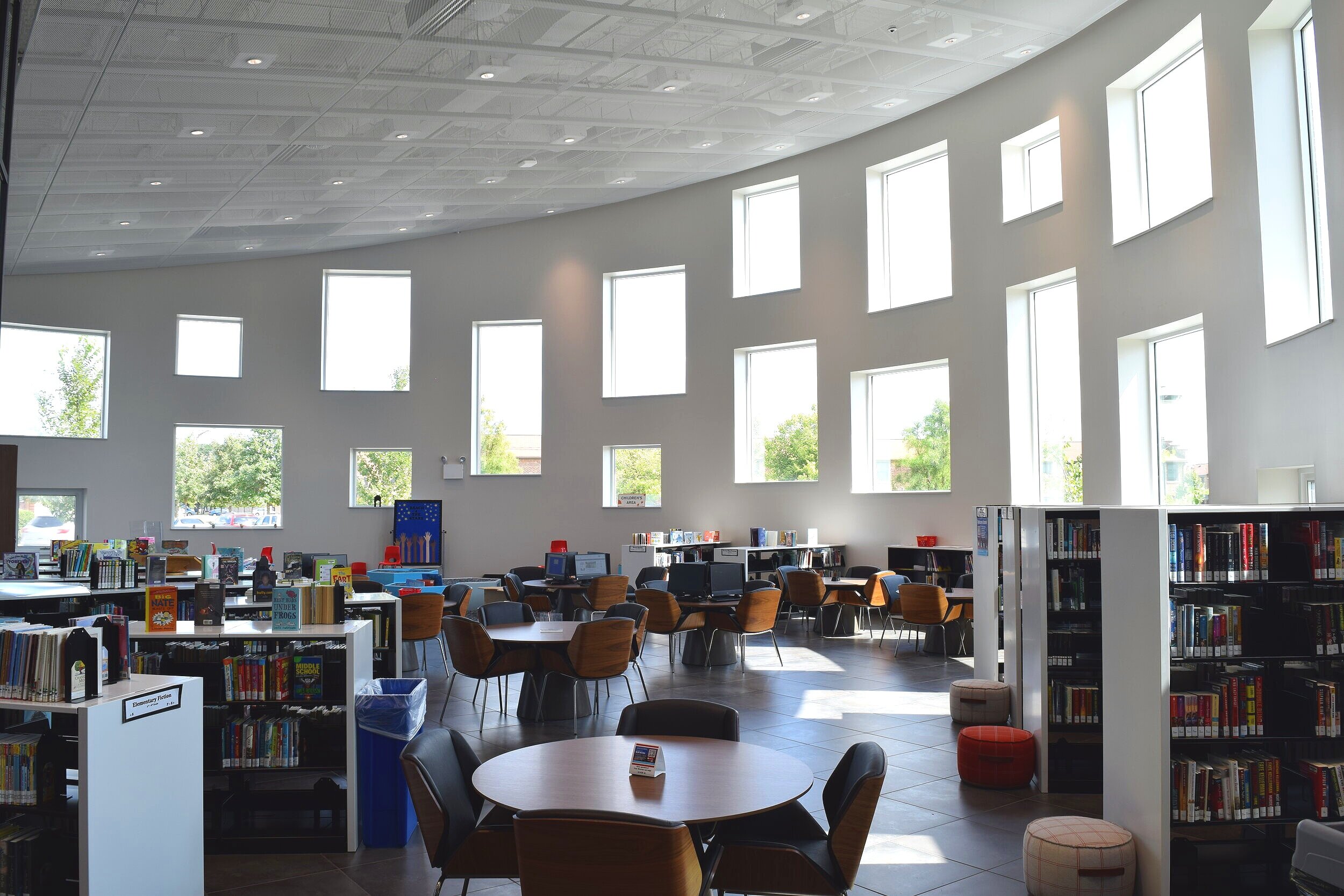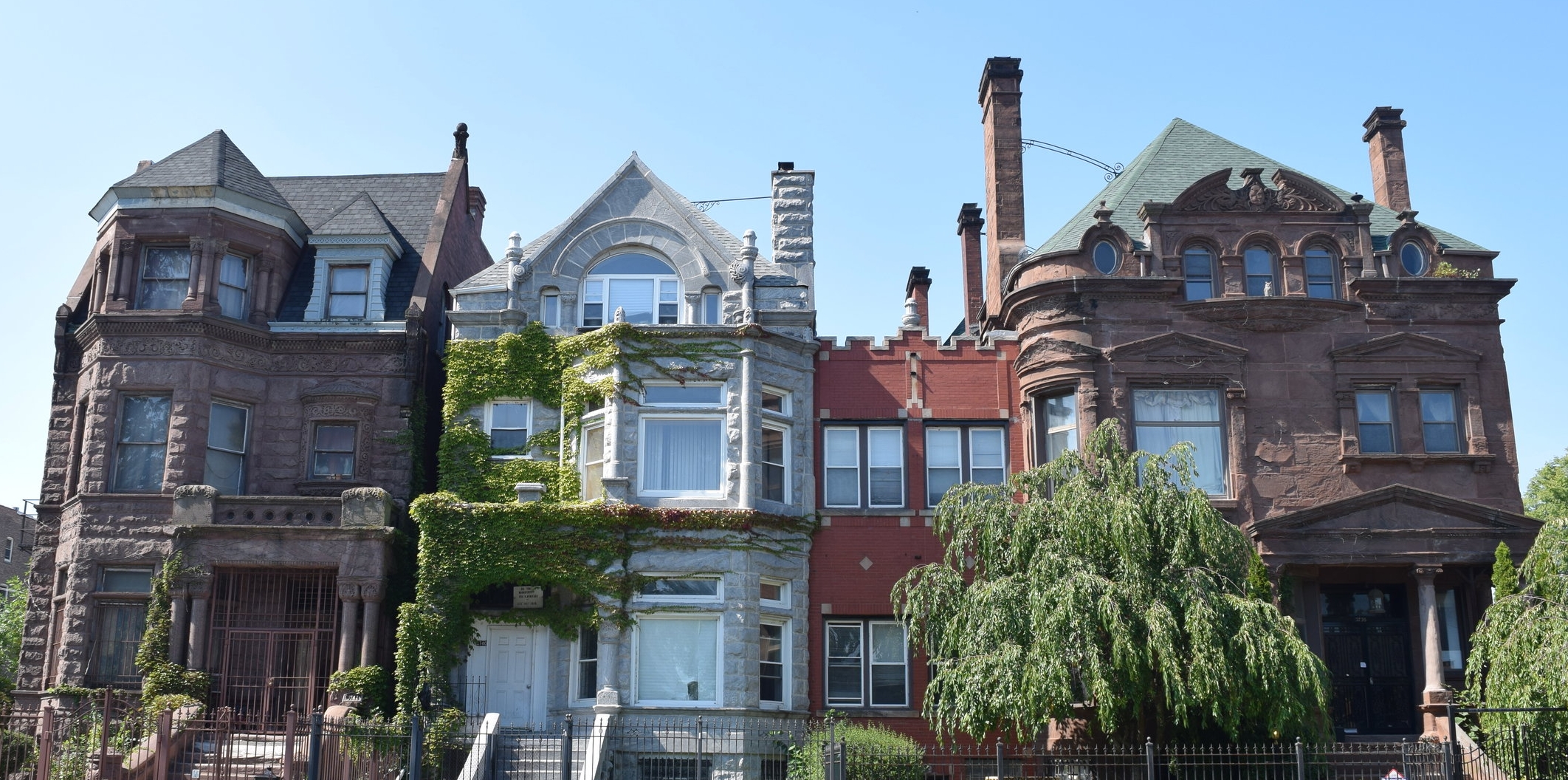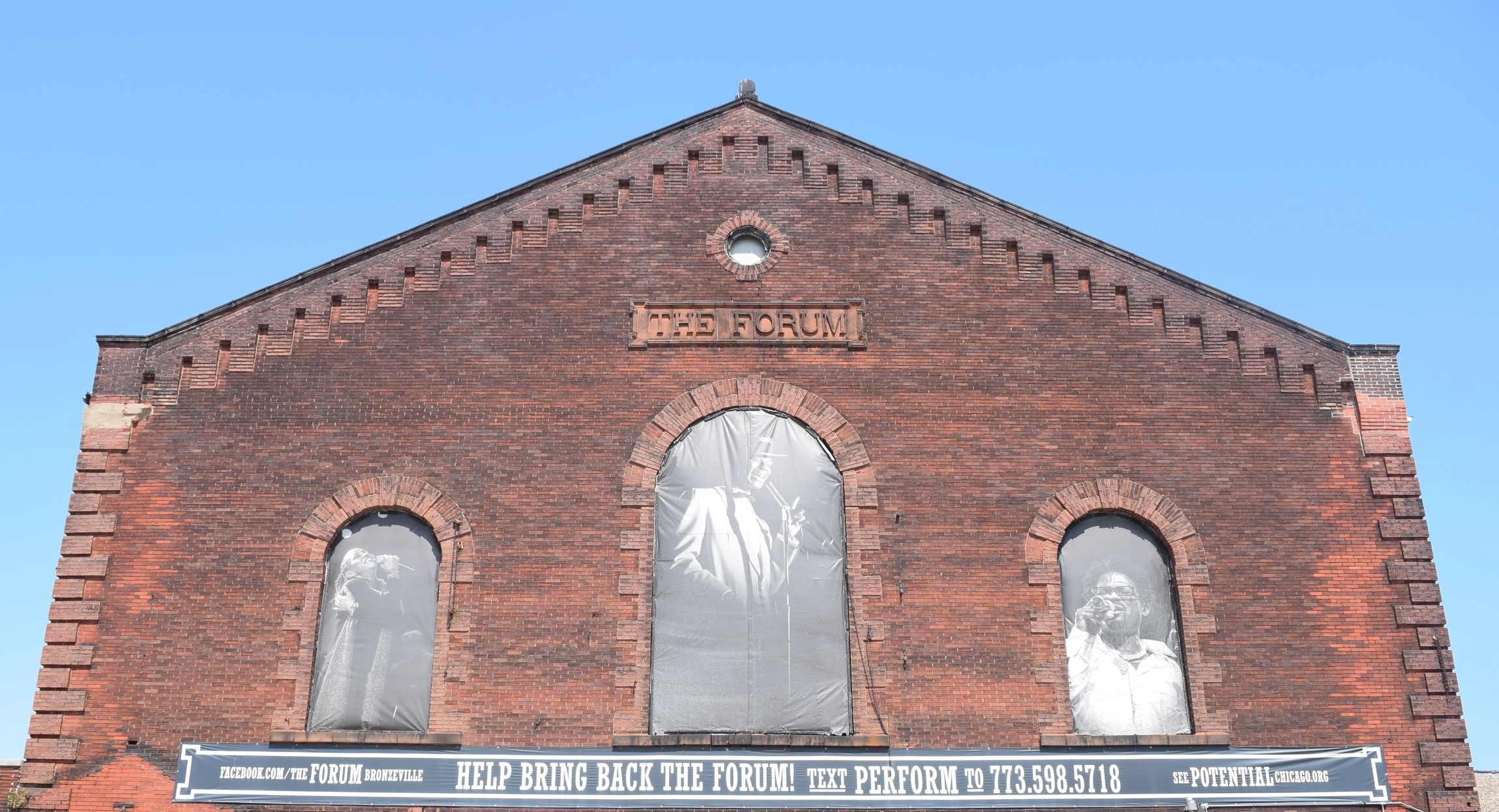THE FAR SOUTHEAST SIDE (ROSELAND, PULLMAN, SOUTH DEERING, ALTGELD GARDENS, AND SOUTH CHICAGO)
Background
Before Chicago’s Southeast side became formally settled and industrialized, native tribes such as the Algonquin, Illini, Potawatomi, and Miami utilized the Calumet River for hunting and navigating the area. With the addition of adjacent rail in the 1850s, the river became an industrial hub and was quickly lined with grain elevators and steel mills. Just to the west of the river’s original natural branch and Lake Calumet, engineer and emerging capitalist George Pullman envisioned and developed a ‘utopian’ factory town where workers would live in a healthier social and physical environment with the intent of deterring strikes and unrest. By the 1880s, with the help of architect Solon Spencer Beman, the town of Pullman consisted of the Pullman Palace Car factory, a hotel, a town square, parks, schools, a theater, a library, and blocks of over a thousand attached brick row houses with modern conveniences such as indoor plumbing and gas. The initial outsider praise of and admiration for workers’ living conditions dissipated after the 1894 strike and boycott, which highlighted the cuts in wages without any reduction in rent and the fact that workers could not independently own any of the existing residential properties. The national rail worker strike that originated in Pullman eventually led to President Grover Cleveland introducing Labor Day as a federal holiday. Likewise, exploitive conditions for Pullman Porters and maids led to the formation of the Brotherhood of Sleeping Car Porters and Maids, which was the first African-American labor union chartered by the AFL and first to win a collective bargaining agreement with a major corporation. As Pullman transitioned into a more typical working class neighborhood in the decades that followed the 1894 strike, Southeast side neighborhoods developed overwhelmingly around the burgeoning steel industry. Four of the largest mills were Pressed Steel in Hegewisch, Republic Steel in East Side, Wisconsin Steel in South Deering, and United States Steel South Works in South Chicago. Other industry in the area included grain mills, shipbuilding, and the Ford Motor plant, which is still in operation on the Calumet River in Hegewisch.
Grassroots efforts by neighborhood groups successfully staved off demolition of Pullman’s surviving structures and the entire district was awarded National Historic Landmark status in 1971. Steadily over the last several decades, many of the homes and remaining structures have been restored and renovated. Since President Obama designated the area a national monument in 2015, ambitious plans to further restore structures have ramped up, including converting the Clock Tower building into the monument’s visitor center in time for the grand opening on Labor Day 2021. Simultaneously, the broader Pullman neighborhood has emerged as a green reinvestment hub with the addition of the Method Soap Factory and Gotham Greens greenhouses. The advocacy and work of grassroots groups, environmental organizations, and the city have also been making strides to remediate large swaths of contaminated land formerly occupied by heavy industry in several Southeast Side neighborhoods. With the sustained resurgence of Pullman and the environmentally conscious remaking of the Calumet River area ecosystem, Chicago’s far Southeast side showcases many examples of both what’s worth fighting to preserve and reinvent.
A Great Day on the Far Southeast Side
Morning
A good spot to start a far Southeast excursion is dropping by Old Fashioned Donuts in Roseland. For nearly 50 years, Buriitt Bulloch has been perfecting his fried dough concoctions like the blueberry donut, pineapple and coconut donut, and his famous, substantial apple fritter. After picking up some donuts, it’s worth taking note of the gritty but largely intact S. Michigan Ave. commercial streetscape. Stretching from roughly 111th to 115th St., prewar structures of various architectural styles make the ‘The Avenue’ an ideal candidate for redevelopment in the city’s Invest South/West initiative. One catalyst for revitalization on the strip is 1921, a business incubator and co-working space in the repurposed commercial building at 11001 S. Michigan Ave. Taking its name from the year of the Tulsa race massacre, the space is inspired by Tulsa’s Black Wall Street and the business owners who had been thriving at the time.
Just one mile straight east is the Southeast side’s most well-known attraction. With the completion of the Clock Tower and Administrative Building conversion to the Pullman National Monument visitor’s center, the neighborhood is now welcoming a surge in interest and foot traffic. Heading south from the new visitor’s center, the Hotel Florence overlooks Pullman and Arcade Parks. Opening in 1881, the hotel had parlors, a barber shop, and Pullman’s only bar, which were all only open to guests. At the southeast corner of Arcade Park, the stone clad Greenstone Methodist Church was completed in 1882. Though envisioned by George Pullman as a venue to pacify all Christian denominations, the church served as a hub for support of the workers strike in 1894.
Visitor’s Center
Arcade Park
Continuing two blocks to the southeast, Market Square was Pullman’s center of commerce in the 1880s with various stalls in the Market Hall building. After a fire destroyed the first Market Hall in 1892, the second iteration along with the four colonnaded buildings that frame the square rose in 1893. Plans to reactivate what remains of the second Market Hall will be revealed in the monument’s next phase.
Pullman’s most distinctive aesthetic is visible in the intact blocks of brick Queen Anne residences. The social stratification of the town was clearly delineated through the homes’ amenities and proximity to the main factory and town hub. Reserved for executives, the mansions along 111th Street have stand alone walls and are by far the largest. Fronting Arcade Park, the spacious 2-story townhomes on the 11100 block of St. Lawrence Ave. and 3-story row houses on 112th St. were constructed for skilled craftsmen. Moving further south or north (into North Pullman) from the factory building, several blocks of 14 and 16ft. wide single-family and multi-unit attached row homes housed the remaining workers and residents.
Though not always on visitors’ radar, North Pullman is integral to the reimagined Pullman experience. On the far north end of the S. Maryland Ave. row house block, The National A. Philip Randolph Pullman Porter Museum celebrates the struggle and achievements of the Brotherhood of Sleeping Car Porters (BSCP) and co-founder and chief organizer A. Philip Randolph. The museum’s exhibits highlight how the group’s contributions to labor and civil rights are indispensable to Pullman’s National Monument status. Continuing the neighborhood’s revitalization momentum, 35 vacant North Pullman row houses will see new life after being rehabbed through a collaboration between the city and development groups.
North Pullman Community Garden
Afternoon
A great Far Southside outdoor destination is Big Marsh Park in South Deering. The former slag (steelmill waste) dump has been capped with clean dirt and clay and reconfigured as a park district biking and nature site. There are track runs for beginners up to experienced BMX riders as well as walking trails, picnic spots, and a nature play area. While more tracks, trails, and the city’s first campsites are in the pipeline, the most recent addition is the Ford Calumet Environmental Center. The facility is a resource for exploring nearby restored natural areas like Indian Ridge Marsh Park and Hegewisch Marsh Park as well as an environmental education center.
At the far south end of the city, at the Chicago Housing Authority site built for African-American WWII veterans, where a young Barack Obama was a community organizer, and Hazel Johnson, “The Mother of Environmental Justice” fought for clean air and drinking water for residents, Altgeld Gardens has been receiving several new enhancements to complement its historic public housing stock. The recently completed, curving Altgeld Family Resource Center is a new community anchor with a focus on sustainability. The net-zero ready facility houses a new Chicago Public Library branch and spacious interior and exterior children’s play areas. Developed and maintained by the non-profit the Urban Growers Collective, the Altgeld Gardens Community Farm consists of flowers, native grasses, and bee hives. Bookending Altgeld Gardens on its southern border, the National Park Service has included the Little Calumet River Freedom Trail as part of its designated Underground Railroad sites. Local abolitionists, the Jan Ton family, helped the plight of escaped slaves through their farm located near the Beaubien Woods Forest Preserve.
Altgeld Chicago Library Branch
Evening
A Southeast Side staple is Calumet Fisheries. Located on the 95th St. Bridge (featured in the Blue Brothers car jump scene), the unassuming shack has garnered praise from culinary authorities ranging from Anthony Bourdain to the James Beard Foundation. Opened in 1948, the smokehouse maintains the tradition of brining the fish and seafood overnight and smoking with oak onsite.
Another notable park space is Steelworkers Park on the South Chicago lakefront. The remediated and capped slag runoff area features native grasses, a sculpture by South Chicago artist and resident Roman Villareal, and the remaining ore walls from the U.S. Steel plant that have been converted into a climbing wall. While experienced climbers can access the wall with their own equipment any time the park is open, the Chicago Park district offers more structured climbs and bouldering on Saturdays in the summer.
Featured Organizations
The non-profit founded in 2017 brings fresh produce grown at its 8 urban farms on the South and West Sides on remediated land. The South Chicago Farm has 30 plots for neighborhood growers and a Growing Dome that allows for food production in the the colder months.
Southeast Environmental Task Force
The grassroots organization was formed in 1989 to fight the Wisconsin Steel garbage incinerator and has been fighting for environmental justice for Southeast Side residents ever since. The organization provides eco-tours of all the remediation work that has transformed the toxic wastelands left over from industry to nature parks.
The South Chicago nonprofit provides free arts eduction programming onsite and with partnering schools on the South and West Sides. Additionally, individual and small group art therapy sessions are available through their Project Impact program.























































































































































